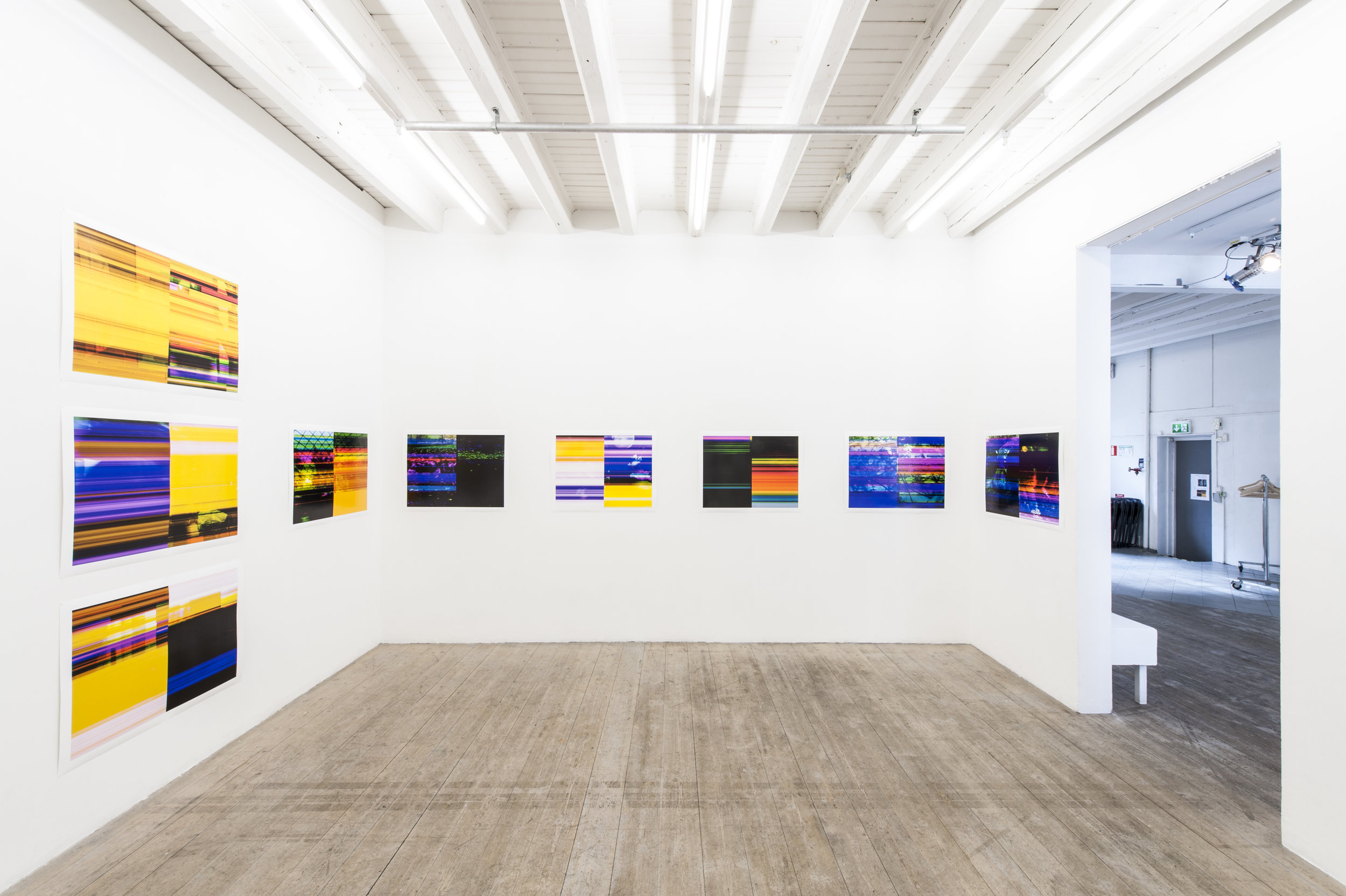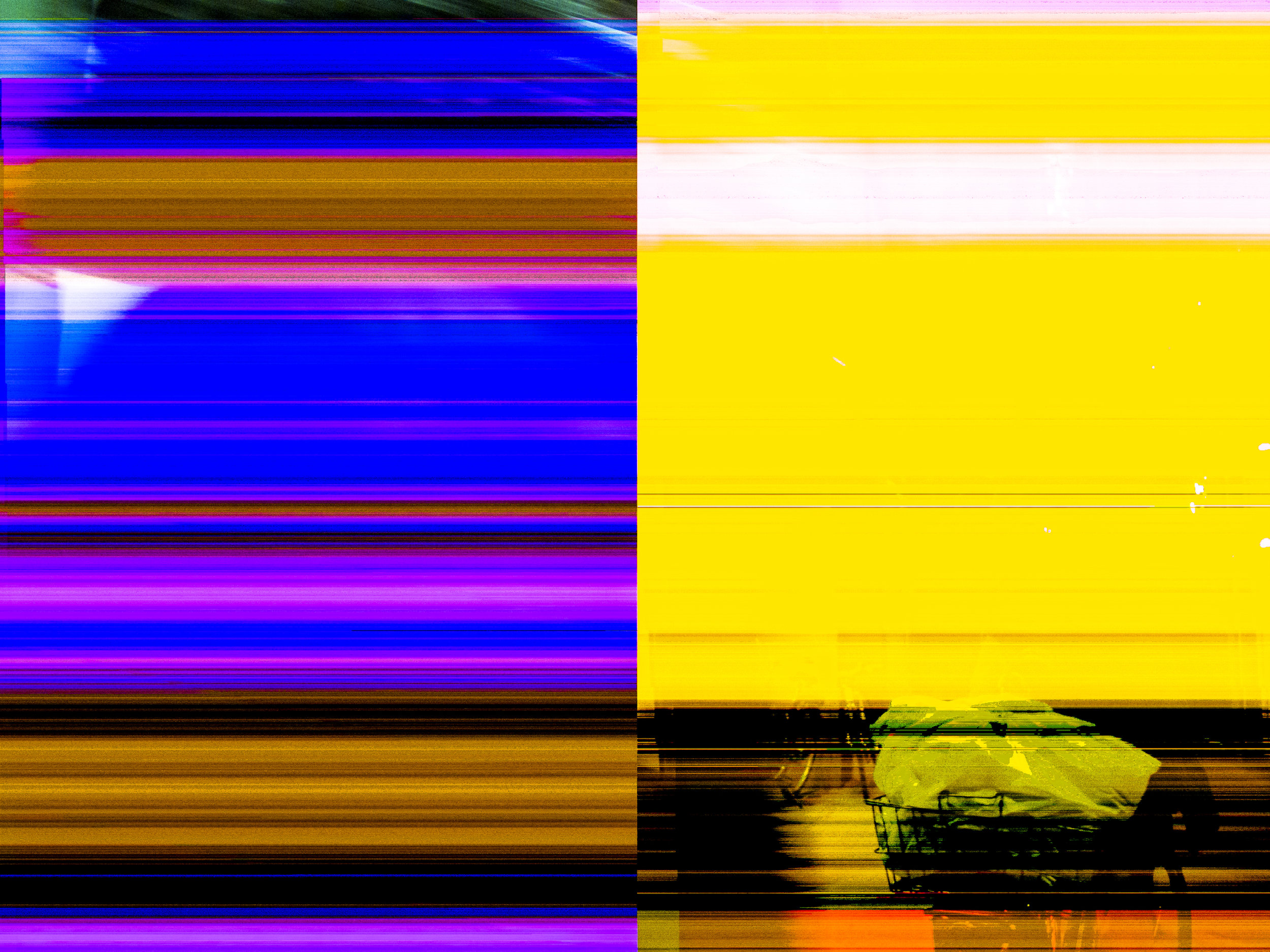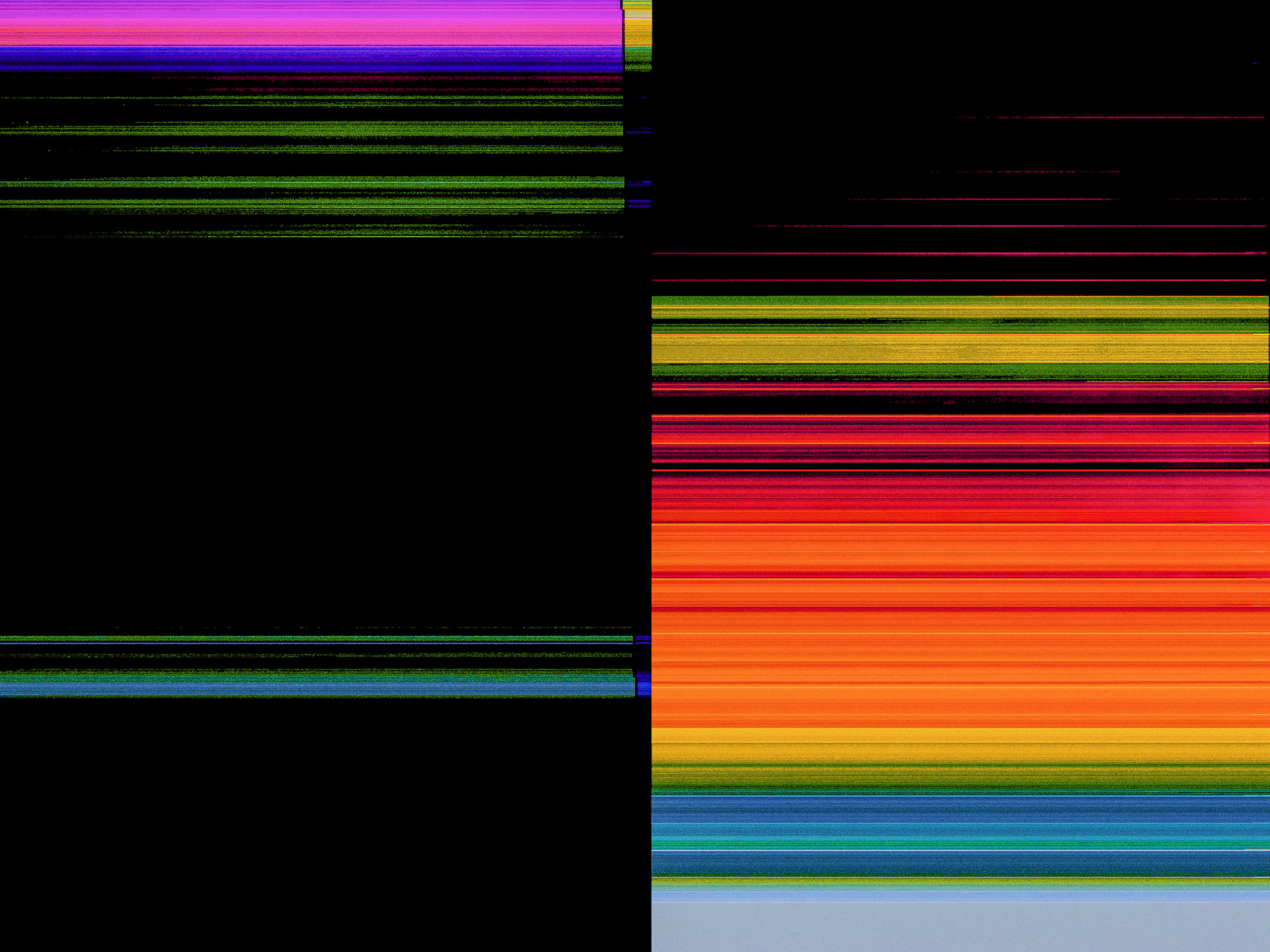




















Ok, it’s happened. The files don’t open properly. The preview only shows colors and shapes. It looks nothing like the photos I was expecting. Something has gone wrong, in a process that is designed to be fool proof.
Time to delete the disaster. Hopefully, this will also erase the shame of a mistake. But instead, I stop myself. I look at the images, contemplate what I see. And I decide to keep them.
So what did I see? I saw their hidden reality. They were just data. Data that could be edited, copied, duplicated, erased, studied, compared, manipulated, transmitted...
The glitch, a simple explanation that is frequently used to describe such a complex and heterodox phenomenon, became the opportunity to advance deeper in the analysis of what is photography.
As Joan Fontcuberta explains “We look through a window and believe that we are experiencing the world directly but then the glass is broken, and we realize that there was something mediating it.”
This broken glass, these glitched images, acting as a post photography Vaccination, have the potential to bring the necessary level of consciousness or immunization to help both artists and public to navigate positively and further beyond the actual post-photography tsunami.
Verktidskrift NR: 01 - 2017 | JANUARI - MARS | TEMA: STÖRNING | ISSN 2002-2735
A glitch is a rupture in information flow, which forces the digital file out of its flawless hyperrealistic design to a reality of randomness and imperfection.*
It exposes the true nature of digital photography hidden beneath its formal facade.
While everything operates as expected, this fragility remains invisible, concealed by the layer of expectations that defines photography itself.
Compared to traditional chemical photography, the potential for errors has been drastically decreased with the advent of digital photography. For professional photography this has been a relief and real game changer, as it relies heavily on efficiency and performance. For art photography this has represented a shift in the way some artists explore and allow errors to intervene in the creative process. At the same time, digital photography has become a catalyst for a post-photographic era.
The original meaning of the word error suggests: to wander along a different path, without a purpose, but with the potential for unexpected results and consequences.
Glitches like these can be generated by fortuity or purpose. Modernism, Abstract Art, Dada, Happening and Conceptual Art explored them, and nowadays it is a key factor in Dj, remix and hacking cultures.
My body of work orbits around layer phenomena. At the center of this research, the exploration deals with some of their defining characteristics, such as their invisibility, their capacity for distortion, but most importantly, the parallelisms that these phenomena and their consequences have in common with cultural and social systems.
In this context, a glitch represents the anomaly that reveals the presence of a layer occurrence and it becomes a vital moment of revelation and a fantastic opportunity for awareness.
Digital photography is intrinsically invisible to the eyes. Its power resides deeply in the hidden possibilities to manipulate the data content in order alter the viewer's mind and perception.
In the same way a vaccine feels contradictory at first (to get exposed to a disease, in order to develop immunity against the same disease), I am particularly interested in the moment when the glitch acts as an antigenic to help the viewer to build immunity against the manipulative uses of the photographic medium.
(*) The wilderness in the machine”: Glitch and the poetics of error | Christina Grammatikopoulou.